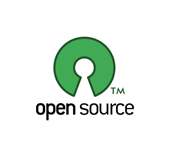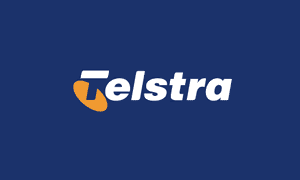The Telco. God's
Tuesday, August 29, 2006
 Another month is coming to an end and what's better than finishing it off with a Mobile Monday event. So yesterday we had the August edition in Bangalore and the topic was Mobile VAS. It was carried over from the last month's discussion where we could not spend much time on it. Rishit from Verity Technologies gave us an good overview of the scenrio in India. The dicussion as usual was very lively with Harish, Sujai, Rajan and all others joining in actively.
Another month is coming to an end and what's better than finishing it off with a Mobile Monday event. So yesterday we had the August edition in Bangalore and the topic was Mobile VAS. It was carried over from the last month's discussion where we could not spend much time on it. Rishit from Verity Technologies gave us an good overview of the scenrio in India. The dicussion as usual was very lively with Harish, Sujai, Rajan and all others joining in actively.The part that fascinated me the most was the challenges in actually providing a VAS application to the subscriber. It is seemingly very simple. Talk to the Operator and get him to host your application on his WAP portal or some other content provider's portal. Its easier said than done. The Operators are God's and God's rarely oblige. To even get a chance to talk to the right person is a big acheivement. Assuming that one has past that stage and the operator is ready, they will eventually ask the content to be delivered through an exisiting Content Provider with proven relationship.
So now the Content Provider becomes the God and you are back to square one! The same process has to be repeated once more. Assuming that one did manage to convince someone and get somebody to host the stuff on the portal, the revenue distribution will be something like 60:40 in favor of the Telco's. The Telco's will take the majority share just because of they hosted the application! So in the end of all the haggling, you dont really make much out of it.
The question goes abegging, why? Why make it so difficult to do business? Eventually its the Telco's are going to gain with more airtime usage and more revenues coming in from the subscriber. A Ecosystem is always helpful for the business. The present state of the industry is a classic case of the lose-lose situation. Eventually the content providers will be driven out of business due to the low margins, the consumers will be deprived of good content and the Telcos will lose the value addition. And I dont think that it can be justified for the simple reason that they invested so much in the network infrastructure! It still does not make any sense.
And this is a global phenomenon. Newsforge recently carried an article by someone under a false name ranting about his experience. All Telco's are born obnoxious. All Telcos are cash rich. And all Telco's fudge their numbers, provide poor customer services and simply scam people whenever they can. The best example of the scam in India is actually the dating services that the Telco's run. Both Airtel and Hutch provide this IVR system where one can hear sweet voices of girls telling about thier ideal mate. Only at Rs. 6 per minute. Dont bother to try it out unless you just want to hear someone's sweet voices and sleep deserts you in the nights. Nobody replies to your messages there (yes, i tried it out!).
The only way to break thier monopoly is to bypass thier network completely and create a new community sponsored voice network. Its a pipe dream and may not happen for a long time. But there are attempts being made. Skype is one amongst them. WiFi is another. And FON is the project which is being watched very closely by many. Their success will have far reaching implications for Telcos and their walled gardens.
Technorati Tags: Telecom, Telcos., Content Distribution, VAS, Scam, MoMo, Bangalore, India
Open Source Watchlist
Monday, August 28, 2006
 Nine Open Source companies have been put on the watchlist by Network World (tip: for easier reading, choose the print option at the bottom of the page). One of my favorites, Asterisk features on the second spot! Asterisk is an Open Source IP PBX which can be used to replace the PTSN based PBX for Small and Medium Enterprises (SME's). Its one of the few open source telephony projects which has been successful. And they recently got funding from Matrix Partners as well. And the mailing list is full of activity. It is yet to pick up in India though; nobody asks the classic question of "please help me" in those fourms!
Nine Open Source companies have been put on the watchlist by Network World (tip: for easier reading, choose the print option at the bottom of the page). One of my favorites, Asterisk features on the second spot! Asterisk is an Open Source IP PBX which can be used to replace the PTSN based PBX for Small and Medium Enterprises (SME's). Its one of the few open source telephony projects which has been successful. And they recently got funding from Matrix Partners as well. And the mailing list is full of activity. It is yet to pick up in India though; nobody asks the classic question of "please help me" in those fourms!Amazingly there is a company from Sri Lanka, called Sahana which has found mention. And another company seems to have an operation there. That is some acheivement. Goes on to show how Open Source enables innovation at the most unlikeliest of places.
Vyatta is one notable exception. It is one of the few players in Open Source Telecom world. The product has been launched but there is no word on how it is doing.
It is very encouraging to see more small businesses crop up around FOSS. Not many are really convinced that services can be a big earner if the code is open source. Its a myth and hopefully one of these will break it.
Technorati Tags: FOSS, Open Source, Free Software Business, Startups, Entrepreneurship, Asterisk, Telecom.
MoMo August Event
Friday, August 25, 2006
 The August MoMo Event has just been announced. The announcement is late by a week since we had run out of venue options. CKS Consulting came in at the last moment and generously offered to host this month's event. The best part was that it happened at the very last moment. We were thinking of postponing this session for another week till we find a suitable venue. Goes a long way to show the interest that Bangalore has in such events.
The August MoMo Event has just been announced. The announcement is late by a week since we had run out of venue options. CKS Consulting came in at the last moment and generously offered to host this month's event. The best part was that it happened at the very last moment. We were thinking of postponing this session for another week till we find a suitable venue. Goes a long way to show the interest that Bangalore has in such events.We are going to carry forward the topic we had stopped at the last meet: Mobile VAS. Due to lack of time we were had to cut the disucssion short. The audience had showed keen interest in the tiopic. Even after the event we had some disucssion on the mailing list. Hopefully we will have the same enthusiasm this time around as well.
This time we are experimenting with only one speaker and a topic, so that it leaves us with some time for disucssion as well as networking. Networking is one of the main reasons why we host this event. For enterpreneurs like me, these events form a support system where once can get business and technical contacts!
So do hop on to the website, register yourself and spread the word. Hope to see you there.
Technorati Tags: MoMo Bangalore, Mobile Monday, Bangalore, India.
The Mesh Networks
Friday, August 18, 2006
 Continuing on the topic of Stupid vs. Intelligent networks, here is a nice article by Network World describing an ongoing DARPA project which is a combination MANET, SDR's, AI and Sematic Web. These technologies are still at a very nascent stage and restricted to academic research. The idea is to create a self configuring network which does not have a single point of failure, where inidividual devices can figure out which radio spectrum to use for communication based on the network condition and present meaningful and correct information to the user.
Continuing on the topic of Stupid vs. Intelligent networks, here is a nice article by Network World describing an ongoing DARPA project which is a combination MANET, SDR's, AI and Sematic Web. These technologies are still at a very nascent stage and restricted to academic research. The idea is to create a self configuring network which does not have a single point of failure, where inidividual devices can figure out which radio spectrum to use for communication based on the network condition and present meaningful and correct information to the user.All these technologies are already being applied at a smaller scale. In the MuniWiFi deployments the WiFi Access Point's actually form a mesh between them. They use dynamic routing protocols which is the heart of MANET's. Rather than depending upon traditional table based routing, the dynamic routing protocols figure out a way to route the IP packets based on the changing network conditions. Several such protocols have been standardised: ADOV, OLSR and DSR. Likewise, the Mesh WiMAX standards also derive off the MANET protocols.
The mesh networks are the new wave. Its a paradigm shift in the way we think about architecting networks.
Technorati Tags: MANET, SDR, Cognitive Radio, AI, Muni WiFi, WiMAX, DARPA, Mesh Networks
The Greenphone
Thursday, August 17, 2006
 Since the announcement of the Trolltech's Greenphone more information about it has started to trickle in. Reuters says that it would be priced at $ 680 and is targeted to enterprises involved in mobile phone software development. An interesting business model is also proposed: if any enterprise wants to build custom handsets for its employees with specific cabapilities, it could use the GreenPhone to develop it and finally get it bulk manufactured by OEM's. Interesting concept! Expect the company branded phone along with the standard package now.
Since the announcement of the Trolltech's Greenphone more information about it has started to trickle in. Reuters says that it would be priced at $ 680 and is targeted to enterprises involved in mobile phone software development. An interesting business model is also proposed: if any enterprise wants to build custom handsets for its employees with specific cabapilities, it could use the GreenPhone to develop it and finally get it bulk manufactured by OEM's. Interesting concept! Expect the company branded phone along with the standard package now.Does this mean that that quest for the truly open phone is at an end? Hardly! There are still a lot of unanswered questions. For starters not all parts of the software is open. The baseband is still closed. The argument most probably is that its anyways standardised and no one would want to change it. But that would hardly satisfy an open source enthusiast who wants the freedom to look at it. Dont expect an FSF endorsement of it unless all parts of it are fully open.
There are again licensing issues. How much GLP'ed code does it actually use? GNU/Linux does allow commerical non-free applications over the OS. But any kernel modules are governed by the copyleft. The kernel sources have to be provided. And baseband has to be a kernel module. Of course there are ways around it! A glue code can be used to bind the propreitary kernel module with the GPL'ed kernel.
The critical part is where is the community? Would the existing QT community include the Greenphone as well? Or will Trolltech leave it up to anyone to build the community around it? Forming a Fedora style non profit organiztion is also another option! Given the pricing of the phone and depending upon its availability, it will not be beyond an average open source enthusiast. A community forming on its own around it is not too difficult to see. Considering the latent demand for such a device it might just be the kind of push QT needs.
Further, what about the Hardware? Is it an Open Hardware project? Are the scehmatics and PCB layout included in the package? If that is provided then it would be a much more attractive solution. Hardware is where you can really cut down the cost of the phone. Or add your own specific components suiting your requirement. Offshoots of this can lead to a very different device which actually ends up being much more than a phone! The possibilities are endless there.
The interesting part would be how the operators and regulators react to this. Ultimately its upto them to allow a particular phone on their own network or not. They have this paranoid fear that any un-approved phone can bring down their whole network leading to downtime (read revenue loss). Although its still unproven, a truly open phone can be a good tool in the hands of spammers looking to extend their reach! Most of the operators would see that as a distinct threat.
But at least its a start. At least OMAP Open Source has a competitor now. A lot is at stake on Greenphone's success.
Via: MoCoNews.
Technorati Tags: Greenphone, TrollTech, QT, Qutopia, OpenSource, GNU/Linux, Community
Mobile TV Roundup
Tuesday, August 15, 2006
 Some conflicting reports about the Mobile TV market. The first one states that there is no big demand for it and makes the case with an example of a teenager who was given Sprint's phone with mobile TV for show off. That never happened since the videos kept getting stuck because of jitter which of course is not show off able! The interesting point made by Rafat is that it generally happens with new technologies. People earlier had said the same thing about computers, internet and mobiles!
Some conflicting reports about the Mobile TV market. The first one states that there is no big demand for it and makes the case with an example of a teenager who was given Sprint's phone with mobile TV for show off. That never happened since the videos kept getting stuck because of jitter which of course is not show off able! The interesting point made by Rafat is that it generally happens with new technologies. People earlier had said the same thing about computers, internet and mobiles!The second one is an market research by IMS which says that there would be around 500 Million people watching TV on their mobiles by 2011 and DVB-H, the predominant standard in Europe, will be the most popular. The report makes some very good noises for mobile TV. Reports are generally like that, otherwise they cant justify the cost, can they? The catch there is that the operators should get their act together for that. They have to set up the value chain for content, high standards of service and attractive (usable!) handsets. That is easier said than done!
Another study goes a step forward and predicts a consolidation in the Mobile TV space and suggests a potential match up between Modeo and HiWire. The matchup is complimentary since Hiwire needs a network, and Modeo needs a more favorable spectrum allocation. No other cases are mentioned in the abstract though. MediaFLO figures as well in the report and it mentions QC's investment in the roll out (around $800 Million). The launch of MediaFLO is scheduled by the end of this year on Verizon's network. That should be very interesting to see.
And subsequent to SprintNextel's announcement of rolling out a mobile WiMAX network, MobiTV is backing WiMAX as its preferred technology. It had stated that earlier as well and now it would presumeably increase the R&D spending on WiMAX. The ripple effect already in progress. That would also rule out all chances of an aquisition of MobiTV by Qulacomm, which is right now pure speculation.
All in all, Mobile TV is sure one of the hottest and most hyped up technologies right now. Its a worthy sucessor to WiMAX some would say.
Technorati Tags: Mobile TV, SprintNextel, DVB-H, Modeo, HiWire, MediaFLO, Qualcomm, MobiTV, WiMAX
WiMAX Takes Off
Wednesday, August 09, 2006
 A day old new but still big; SprintNextel has decided to go ahead with Mobile WiMAX deployment for it 2.5 GHz spectrum. Its being touted as Sprint's 4G plan. GigaOm, Rafat Ali and Slashdot have covered it comprehensively and the annoucement has been disected in many ways now. Sprint was supposed to be considering WiMAX and Flash OFDM and there was a lot of speculation on which way it might swing. The future of Intel and Qualcomm were linked to it. And Intel it is finally.
A day old new but still big; SprintNextel has decided to go ahead with Mobile WiMAX deployment for it 2.5 GHz spectrum. Its being touted as Sprint's 4G plan. GigaOm, Rafat Ali and Slashdot have covered it comprehensively and the annoucement has been disected in many ways now. Sprint was supposed to be considering WiMAX and Flash OFDM and there was a lot of speculation on which way it might swing. The future of Intel and Qualcomm were linked to it. And Intel it is finally.Qualcomm has still something to cheer for; Sprint has already decided to go ahead with EVDO Rev A deployment and extend its EVDO Rev 0 network. But Flash OFDM effectively is buried now. And so is QC's acquisition of Flarion. The only benifit it can derive of that deal are the OFDM patents. The only choice left for it is to enforce them and earn royalties. Watch out for some IPR suits from QC shortly. But QC definately has missed a trick. The momentum is with Open Standards. Nobody wants to pay royalties nowadays!
The interesting bit was Sprint's take on the royalty issue. One of the advantages of the Open Standard was the ecosystem it can create around it. A thriving ecosystem would lead to economies of scale which in turn will reduce the price of the equipment. That suits Sprint just fine since it will cost them less to roll out the network. Compared to EVDO Rev A, it will cost them 10 times lesser to build the network but will give 4 times the performance. That is still a very hyped up number. It will still cost them around 2 to 4 Billion to roll it out!
Another interesting aspect is the interworking with the incumbent WiMAX players ie. Clearwire. They can generate a lot of business from the roaming contracts. The money would ultimately flow over to Intel and Motorola since they were the one's who propped up Clearwire when they needed it.
All in all a big win for Intel and WiMAX and a bad loss for Qualcomm. As Andy says, Qulacomm's decades old relationship with Sprint accounted for nothing but peanuts.
Technorati Tags: SprintNextel, Sprint, WiMAX, 4G, FlashOFDM, Intel, Qualcomm, Motorola, Clearwire
FOSS and Communism
Sunday, August 06, 2006
 A nice article exploring the relationships between Free/Open Source Software (FOSS) and communism. Both these movements have a lot in common; thier ideology of a classless society, thier views on property and the distribution of wealth. Although communism is more of an theoretical concept rather than a movement. All the movements based on that ideology have failed horribly in practice. Given the history of cold war, its a very touchy issue for America.
A nice article exploring the relationships between Free/Open Source Software (FOSS) and communism. Both these movements have a lot in common; thier ideology of a classless society, thier views on property and the distribution of wealth. Although communism is more of an theoretical concept rather than a movement. All the movements based on that ideology have failed horribly in practice. Given the history of cold war, its a very touchy issue for America.The biggest difference between them is of course, the stress on freedom. Free Software is about more about free as in freedom rather than free as in beer. Anybody is allowed to sell GPL'ed software or charge for services around it. Even Open Source software is more concerned with the freedom to access the sources and modifying it as per requirements. Freedom is where the open source (eg. BSD) and the FSF (eg. GPL) ideals meet.
The communist ideology on the other vests the right of freedom with the state. Its goal is to create a classless society where the state is given all the powers, even the power to subdue your liberty. That inevitiably leads to misuse of the power since the ultimately its a human who discarges the duty of the state. And humans can easily corrupted. Land, power and wealth are the three basic reasons why wars are fought.
And maybe that is the reason why FOSS might become the most successful of the communist experiments. The crucial element, the all powerful state is removed from the equation. There are no boundaries of nationality, age, gender and identity. The creation of wealth (software) is now governed by by the the truly darwinian process, the Bazaar Methodology. Since the absolute authority is not vested in anybody in particular, the element of human failing is eliminated.
FOSS in that way is the most utopian of concepts. It even betters communism.
read more | digg story
Technorati Tags: Freedom, FOSS, Open Source, Communism, Bazaar Model.
OFDM and DoRA
Friday, August 04, 2006
 The Inquirer does some digging on Sprint's Finanacial Results and finds some hints on its plans for the unused 2.5 GHz spectrum. As per insider information, its not WiMAX but Flash OFDM! Seems like the strategic moves of Intel and Motorola of pushing up WiMAX are not really paying off. It should be noted that Sprint is one of the two CDMA2000 carriers in US and Nextel had earlier trialled Flash OFDM with Flarion. CDMA 2000 is all Qualcomm's play and with the acquisition of Flarion, Flash OFDM is as well.
The Inquirer does some digging on Sprint's Finanacial Results and finds some hints on its plans for the unused 2.5 GHz spectrum. As per insider information, its not WiMAX but Flash OFDM! Seems like the strategic moves of Intel and Motorola of pushing up WiMAX are not really paying off. It should be noted that Sprint is one of the two CDMA2000 carriers in US and Nextel had earlier trialled Flash OFDM with Flarion. CDMA 2000 is all Qualcomm's play and with the acquisition of Flarion, Flash OFDM is as well.Further Sprint and Verizon have also announced EVDO Rev A trials of with Lucent and Nortel and expansion of the existing EVDO Rev 0 network. Given that the EVDV is effectively dead now it left the EVDO Rev A the only option for these CDMA 2000 operators. In the long run both the EVDO Rev A networks and the Flash OFDM networks would get along well with together because of the simple reason that, they are being pushed by Qualcomm. So instead of deploying a new (and yet unproven) technology, it would make sense for Sprint Nextel to interoperate with DoRA!
All in all, good news for Qualcomm after the recent setbacks. Good time to buy QC stocks!
Update: Om Malik on Sprint's EVDO Rev A service.
Technorati Tags: Sprint Nextel, Qualcomm, Flash OFDM, WiMAX, EVDO, DoRA
Startup Job Exchange
Thursday, August 03, 2006
Venturewoods, a leading entrepreneurship focussed blog in India has come up with a Startup Job Exchange. As any entrepreneur will tell you, finding the right talent in India and building a team is the most difficult task, especially if you are trying to bootstrap your venture and do not have funding. Its the classic chicken and egg scenario; the investors want a team and the team wants investment before they commit. The trend of working for equity hasnt really taken off in India.
Hopefully this will go a long way in connecting entreprenuers and like minded people together. Do have a look at my post as well.
Technorati Tags: Entrepreneurship, Startup, Jobs, India.
Hopefully this will go a long way in connecting entreprenuers and like minded people together. Do have a look at my post as well.
Technorati Tags: Entrepreneurship, Startup, Jobs, India.
MBMS Gets a Boost
 Mobile Multimedia Broadcast Service (MBMS) is one of the many competing technologies for Mobile TV. Its biggest advantage is that it can be used over existing 3G spectrum and does not need big changes to the network or the handset. DVB-H, the other popular Mobile TV technology requires new chipsets in the handsets and uses a new spectrum. It also gives less control to the operator regarding the content. And this seems to be worrying Telstra going by the reports.
Mobile Multimedia Broadcast Service (MBMS) is one of the many competing technologies for Mobile TV. Its biggest advantage is that it can be used over existing 3G spectrum and does not need big changes to the network or the handset. DVB-H, the other popular Mobile TV technology requires new chipsets in the handsets and uses a new spectrum. It also gives less control to the operator regarding the content. And this seems to be worrying Telstra going by the reports.After a high profile trial of DVB-H, it is having second thoughts. Its now going in for an evaluation of MBMS which can be used over its exsiting 3G deployment and will not need to supply users with new handsets. The reasons being cited are cost of network equipment, expensive handsets, control over content and the spectrum issues. Given that DVB-H right now has the momentum this seems to be a mysterious deceision.
Its not a done deal yet. Whatever happens will have ramifications for both Mobile TV and DVB-H!
Technorati Tags: Telstra, MBMS, DVB-H, Mobile TV.

